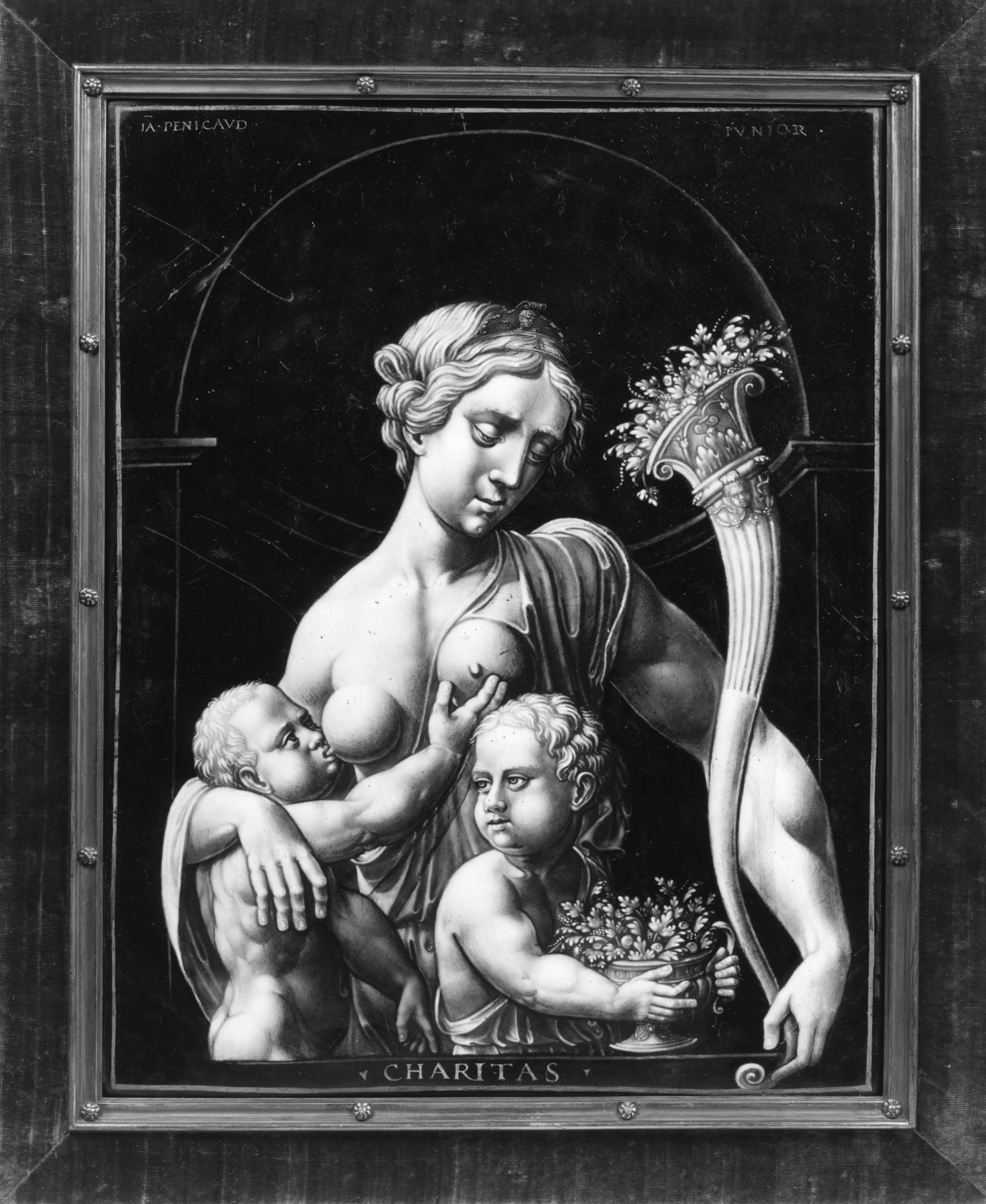Plaque with an Allegorical Representation of Charity
(Renaissance Europe )
This plaque would have been made for a series illustrating the virtues, of which Love or Charity was considered one of the most important. In the dramatic and vigorous modeling and the forced posturing of the figures, this work by Jean II Pénicaud reveals the mannered style of the Franco-Italian school associated with the royal court at Fontainebleau as it had developed by the middle of the 16th century.
Provenance
Provenance (from the French provenir, 'to come from/forth') is the chronology of the ownership, custody, or location of a historical object. Learn more about provenance at the Walters.
Duke of Marlborough, Blenheim Castle [date and mode of acquisition unknown]; Blenheim Castle Sale, London, June 14, 1883, no. 64; Lucien Cottreau [date and mode of acquisition unknown]; Sale, Paris, April 28-29, 1910, no. 56; J. Pierpont Morgan [date and mode of acquisition unknown]; Henri Daguerre, Paris [date and mode of acquisition unknown]; Henry Walters, Baltimore, 1928, by purchase; Walters Art Museum, 1931, by bequest.
Exhibitions
| 1889 | Exposition Universelle. Paris. |
| 1874 | Special Loan Exhibition of Enamels on Metal. South Kensington Museum, London. |
Conservation
| Date | Description | Narrative |
|---|---|---|
| 5/5/1965 | Treatment | cleaned |
| 11/1/1987 | Treatment | cleaned; examined for condition |
Geographies
France, Limoges (Place of Origin)
Measurements
H: 10 13/16 x W: 8 3/8 in. (27.5 x 21.2 cm)
Credit Line
Acquired by Henry Walters, 1928
Location in Museum
Not on view
Accession Number
In libraries, galleries, museums, and archives, an accession number is a unique identifier assigned to each object in the collection.
In libraries, galleries, museums, and archives, an accession number is a unique identifier assigned to each object in the collection.
44.188



